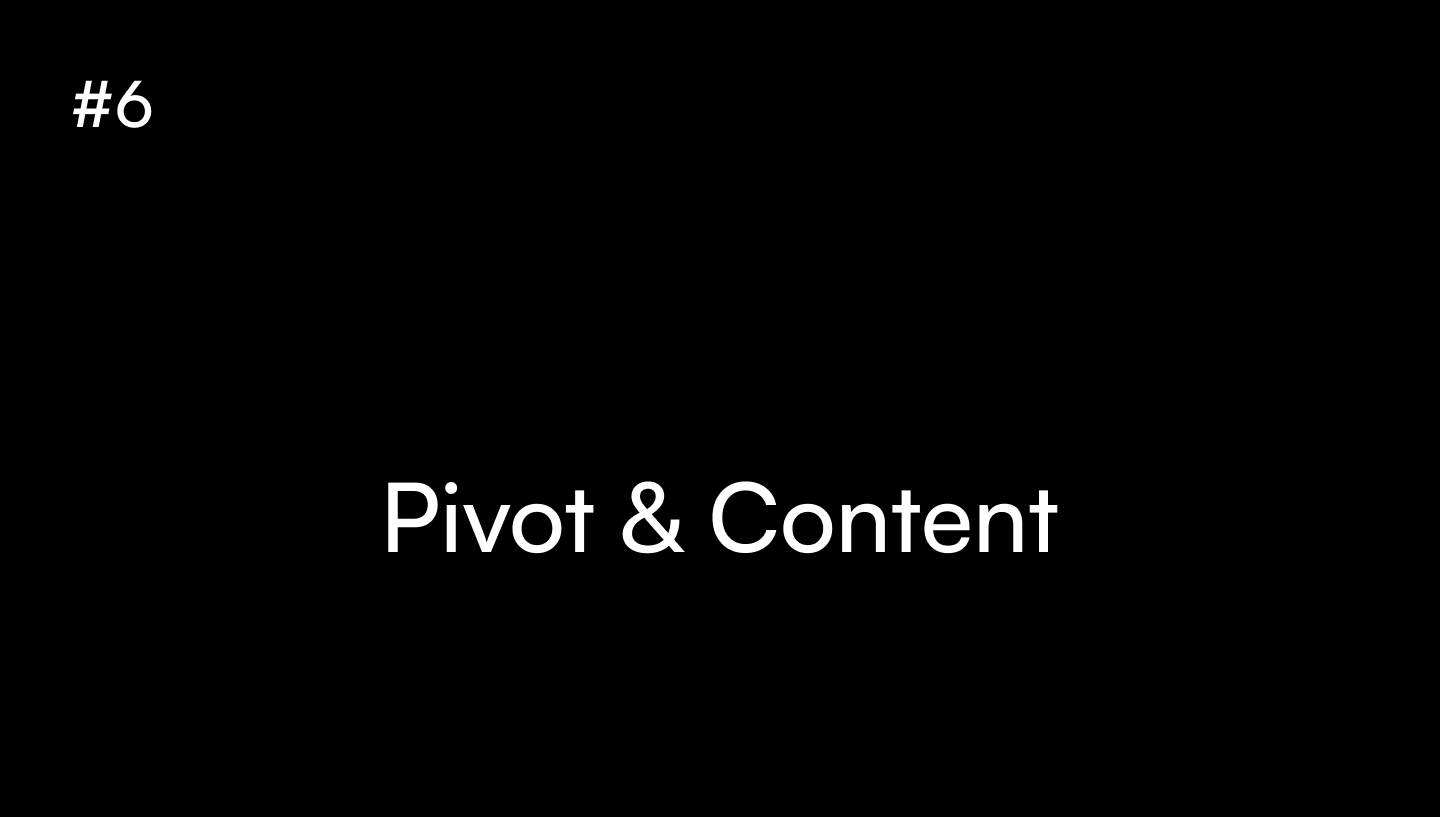A lot of things have changed at Uvodo: we did pivot.
So, the content and all other related stuff I had done for the last 12 months since the lunch.. Poof, gone. Just like that.
In this article, Imma talk about what’s done, gone, and happened to content.
What’s pivot? Why do startups pivot?
Let’s first start there.
A startup pivot refers to a significant change in a startups core aspect, including target market, business model, etc. And, this can happen due to customer feedback, having hard time trying to find market fit, business model limitations, et cetera, et cetera.
We first thought about creating a headless eCommerce platform which is for one time fee, let’s you own your data (by hosting it on your own server), and allows you to fully customize the platform by giving the source-code and integrate third party tools with API. Sounds amazing, right?
Even though this model has many advantages, it’s not for merchants who want to move online quickly and don’t have resource and skill for the technical side.
After a year of development, talking with early customers, trying to find our “perfect” business model which help merchants the best, we said OK, we need to pivot.
So, we launched hosted Uvodo (SaaS-based).
The birth of Uvodo and its content
When Uvodo was launched first in Jan 2022, it was self-hosted & headless, source-available eCommerce platform. And, our target customers included developers, digital agencies, tech savvy-entrepreneurs since installing Uvodo in one’s server requires some technical knowledge. We, of course gave support and helped with installation. But, why not make an eCommerce platform that allow merchants create their store within clicks?
Anyways, about the content.. So, the content for Uvodo was focused on the parent keywords around “self-hosted”, “headless”, “ecommerce php script” etc.
I built a team of content writers (it took hard time to build) to produce content for our blog and guest posts. We’d also post on Instagram, Twitter, Facebook, LinkedIn, Reddit, Quora, and our Discord channel. As if that’s not enough, we listed Uvodo in 10+ startup listing platforms.
Plus, the posts on social media platforms, captions and product screenshots on those startup listing platforms, links, images on the guest posts – tons of content (visual & text) were about self-hosted version of Uvodo. For a year, the content is generated, tangible and intangible resources spent.
On the blog side, ugh. I practiced intensive keyword research, internal and external linking, acquired organic keywords, ranked, got some backlinks.. Search engines started to recognize Uvodo as self-hosted & headless eCommerce platform.
We had articles published one per day and carried out some known SEO practices, and things were going pretty good. Our DR increased by 16 and monthly traffic by x7, acquired organic keywords (300+) quickly.
It was December 2022 when we planned hosted Uvodo, and starting from January when we proceeded to pivot. We didn’t kill the core product, so we might call this “partial pivot”. Can we?
Transforming content after the pivot 🤖
Step #1. I paused the blog production and gave our writers’ team a break. Everything stopped. No more articles to be written.
PS: Though we stopped writing articles “officially”, we still were writing some not to stay too behind. We wrote some branded articles (related to some features Uvodo has like Cash on Delivery & Buy on WhatsApp) for our blog to start acquiring some keywords. So far, we’re doing good.
Step #2. We started to remove the articles from Uvodo’s blog.
- I removed them from our site (we were using WordPress CMS).
- Put 410 HTTPs status to the deleted articles (on WordPress, admin panel → Tools → Redirection — it’s a plugin).
- Removed the deleted content from Google Search Result. Here’s the tool.
Traffic dropped by over 90% (half recovered now), organically generated & ranked keywords lost.
Step #3. Then, I moved to social media.
Removed the posts, and updated descriptions of posts that don’t have the old content visuals. I’ll once more delete some since we have also changed design slightly. We still have some old posts appearing on SERP, and are in the middle of talking with the platforms to get them removed.
Step #4. I reached out to the websites where we’ve written guest posts to update the copy and visuals.
Step #5. We changed and edited product descriptions and screenshots on the startup & business listing platforms i.e., BetaList and Crunchbase respectively, and reached out to them when we were not able to edit. This took a couple of weeks.
Learning from pivot
Going slow and fast at the same time for different parts of startup. Too slow, we might fail; too fast, we might fail. Need to find the “bliss” point.
We launched Uvodo SaaS on May 2023. In our case, slowing down content and accelerating development proved to be crucial for successfully launching the new version ON TIME. For instance, we might now practice some marketing tactics, bring traffic and customers to Uvodo. But what will they see? An eCommerce platform that lacks some features. This will inevitably give us bad reputation, and those people who could find us though our marketing efforts would never coming back second time.
Everyone has great & brilliant ideas for what need to be done to grow the product. But should we do all? No. Learn “saying no” and “cutting off” and “think twice and question: comparing which step will help us grow more?”. Always cut off the things that is not in high urgency while focusing on what’s wanted from our current customers, and question what’s the most efficient practice we should do at the moment to grow faster. At the end, it’s always customers: keep them happy. “It’s easy to keep happy customers, what’s hard is retaining the unsatisfied ones” Orkhan.
Takeaways
What I’d do differently is not producing lots of articles around the keywords of self-hosted Uvodo. I’d go with general topics, and try to rank for the keywords that we were certain of like “small businesses”, “eCommerce platforms” which I’d adjust and improve later.
Second thing I wouldn’t do is submitting Uvodo to listing platforms like BetaList, Startup Inspire, Webwiki, etc. that early. Or, at least I’d submit different product description which is generic, but not a good option either. Best is not to do.
Though submitting a product to the listing platforms give backlinks (some no-follow) and allows you to use your product name (visibility stuff – brand & social signals, recognition, etc.), still it will be a headache later on in case of pivoting or changing product’s features and main mission, vision, goal.
This may seem minor stuff or not important at first sight, but if we want to go big, it is crucial for us to maintain a cohesive brand image and messaging strategy.
Consistency builds trust and even loyalty, and consistency is a fundamental aspect of building a brand.
Listing platforms often showcase key aspects of your product, including its features, mission, and goals. If these elements change over time, the existing listings may become outdated and no longer accurately represent your brand. This misalignment in turn, can confuse potential customers and weaken the established trust and credibility.
For this, I try to keep content & product aligned and consistent across the Internet to strengthen our brand’s identity and a sense of reliability and trust among our audience.
That’s it.
Cheers, an LMK if you have any questions.

